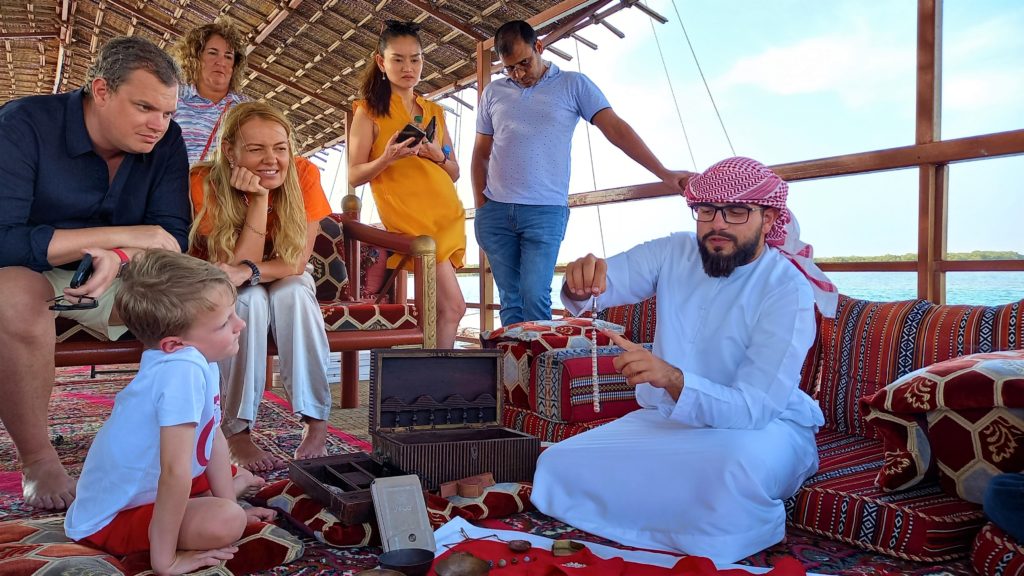Ras Al Khaimah – The pearls were once hunted as a treasure that would only grow naturally. Diving to find them was for many years a profession off the coast of the United Arab Emirates. But now there is a farm that grows them. The process even involves a seed that boosts to 60% the chance to find the gemstone when the oyster is finally open. This place is Suwaidi Pearls in the emirate of Ras Al Khaimah.
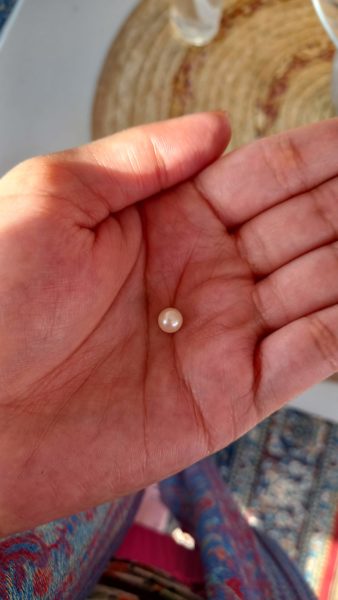
The place is a tourist attraction. The pearl farm offers tours that present the cultivation and the history around this activity that went from ancient to modern. The tour starts at the small fishing village of Al Rams, which is home to a shop that sells jewels using the pearls.
The view outside looks like it came from a painting. The Al Hajar mountain range in the backdrop of the mangroves along the sea. It’s a beautiful mix of colors.
Against this backdrop, the Suwaidi Pearls was established in 2007 by Abdulla Rashed Al Suwaidi. The Emirati is the son of one of the last divers that hunted natural pearls in the country. He himself dives in search of pearls but pursues the activity only as a hobby. The pearls are a natural reaction of the oyster, a mollusk that lives inside shells, to a foreign body like sand or a seaworm.
These and other details are told by a guide that accompany the groups from the departure from port to the arrival at a spot in the middle of the sea. There the tourists are led on a dive into the history and information and see buoys indicating where the oysters are grown.
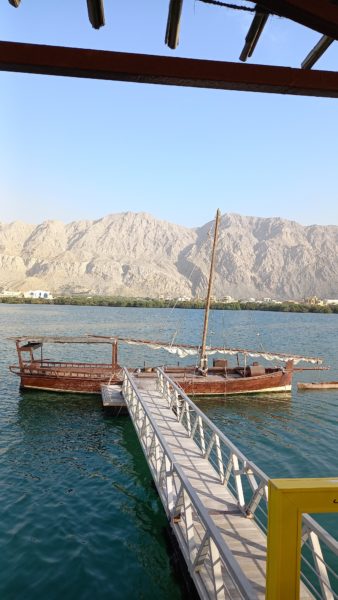
This was the first venture of its kind in the region. “The pearl is the only gemstone that cannot be modified. Its luster, its color, its size, is all natural. The same way it’s hatched out from the oyster, it’ll stay,” the guide said. This goes both for organically formed people and for those harvested there. Nothing can be modified. Except for the odds to find the pearls.”
History
The price of a pearl can change, starting at approximately USD 300 and going well beyond that, depending on the gemstone. The colors, intensity of the glow, size and format, all this impacts the price of each one. In the Gulf there’re three types of oysters that can form pearl. But the maharah pinctada radiata, one of the most common in the region, for instance, can form pearls of 14 different colors.
The guide shows the tools that were used by divers for the age-old activity – equipment like ropes tied with a stone, and a nose clip to stop oneself from breathing in order to stay underwater for longer.
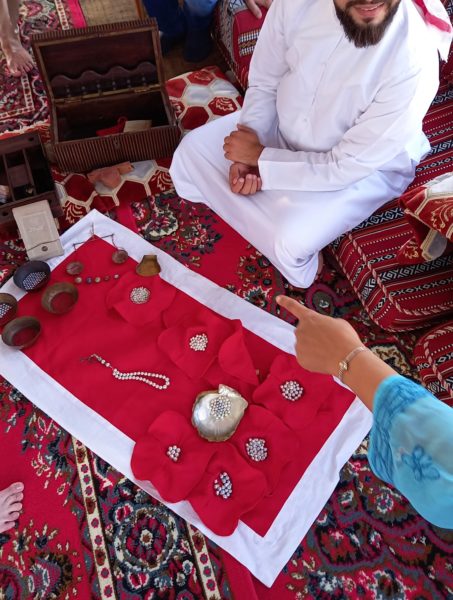
It seems precarious. And although it was an important profession in the region for many years, the activity was considered dangerous for divers. Besides the tools, there were different types of pearling boats. One of them was restored and is where the visitors receive the tour of Suwaidi Pearls.
Cultivating gemstones
If in nature the chance of an oyster to grow a gemstone is rare, in the farm it jumps to up to 60%. To achieve that, the farm uses what’s called seeds – small white beads that could be mistaken for pearls at a first glance but are actually made from chemical elements that induce the production of the gemstone.
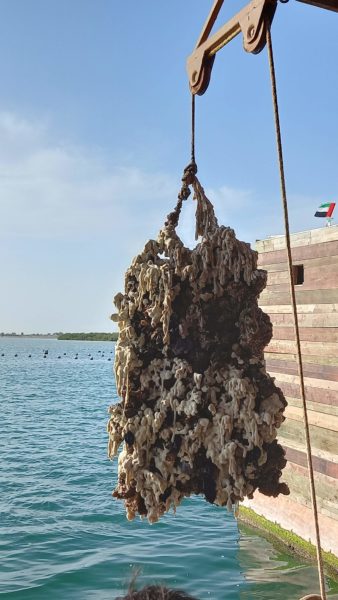
To introduce the seeds, the guide said, it was necessary to create a process to numb the oysters. This kind of anesthesia is done by putting them in a controlled, dark environment so that they can relax, and the shell can be opened without causing further injury, so that the seeds can be planted in the oysters.
The process takes approximately two years. Only then the farmers can open the oysters and discover whether they were successful or not in this journey. And as a way to provide the tourists with the spirit of adventure, the guide invites one of them to fish an oyster out of an aquarium. Opening it, the guide shows the complex organism of the oyster, pointing to its heart, its stomach and where the pearl may be.
With a flick of his hand, all gasp when they see a small pearl jump out of the mollusk. “And can there be more than one?” one visitor asks. The guides explains that an oyster can indeed produce more than one pearl. But in cultivation, each seed can only produce one gemstone. If there was another one, it would be natural. Which was not the case.
And that’s ok, because although the tour included other spots and a collection of pearls and jewels crafted from the gemstone, I believe one small pearl was enough to please the group of tourists, who passed the small orb around in awe.
*The journalist travelled by the invitation of the Ras Al Khaimah Tourism Development Authority
Translated by Guilherme Miranda



